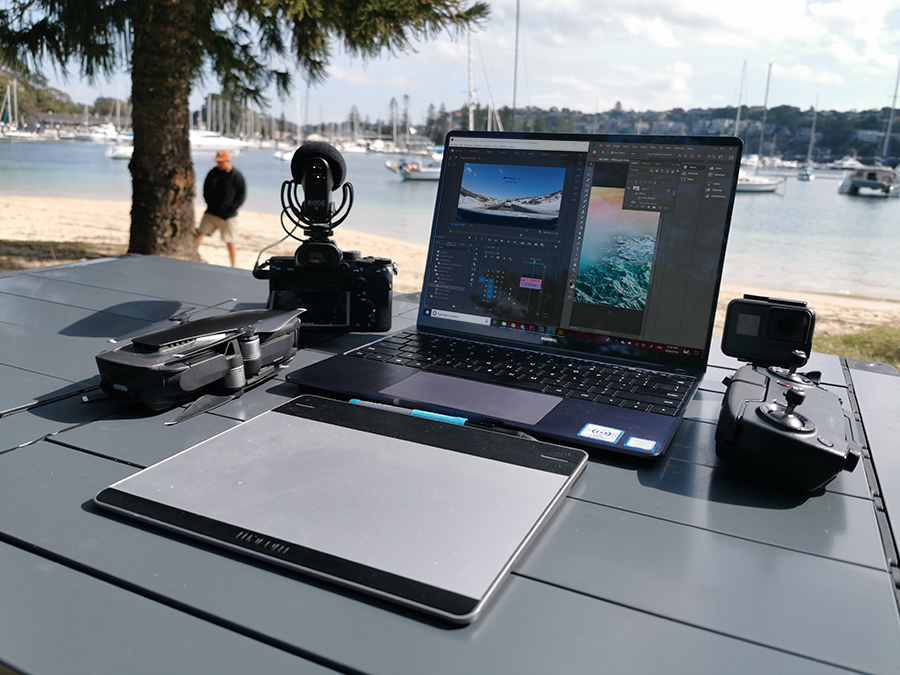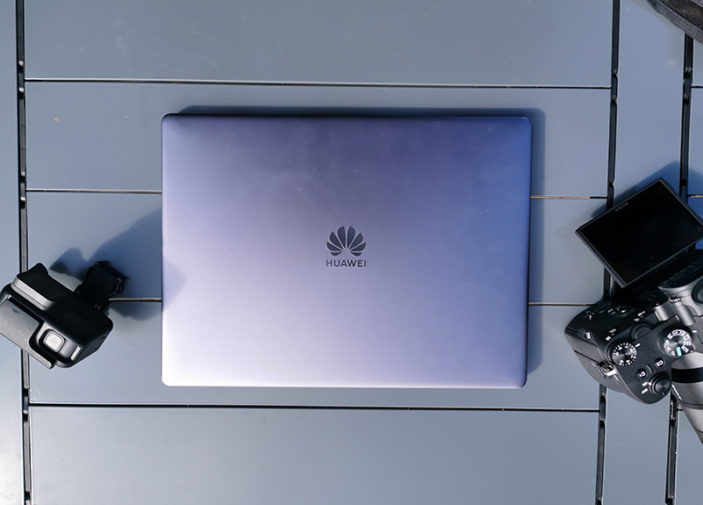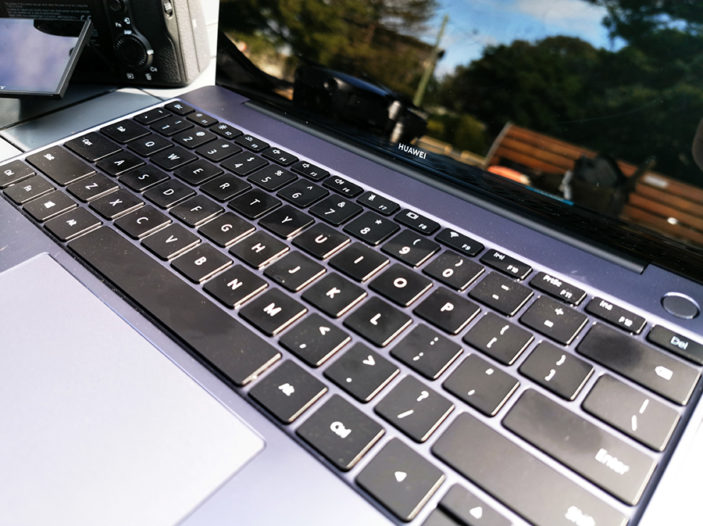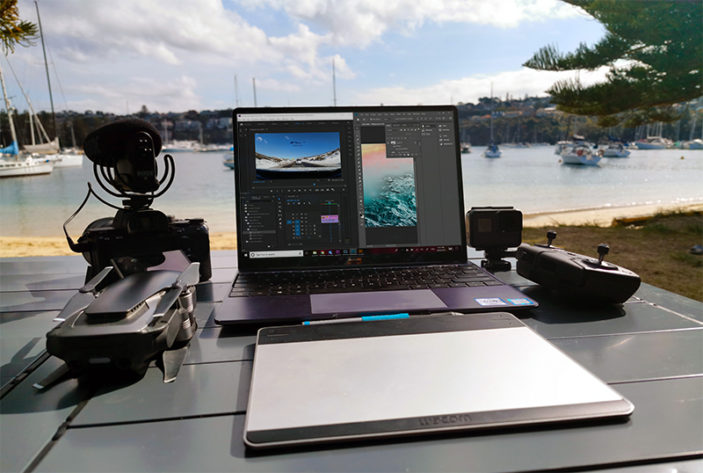
When it comes to digital media, photography and videography, nothing spoils the flow of creativity more than the inability to review, edit and publish your work quickly after capturing and creating it when your still fresh with passion and ideas. A creator needs a reliable tool that’s portable and can be used on-the-road that’ll assist with a quick turn-around that allows you to send your invoice or post online ASAP. Enter: the Huawei MateBook 13.

Within its 14.9mm thin, 1.3kg frame, the MateBook 13 is a powerful and sleek device that has its own dedicated graphics chip – the NVIDIA GeForce MX150. This graphics card draws 25 watts of the notebooks power and Shark Fin Design 2.0 fans that enerate 25% more airflow than previous Huawei notebook releases. The screen is a 13” touchscreen 3:2 ratio display at 1440p with 100% of the sRGB colour gamut, 1000:1 contrast ratio and 300 nits brightness – its crisp, responsive, vibrant and stunning.
The keys on the keyboard have a firm, yet smooth spring to them and are a breeze to type on.

The tests
There is the option an i5 Intel processor but we are using the i7 for the purpose of our tests. With 7 tabs open in Chrome, Photoshop and Illustrator running with 25GB and 40MB files respectively and Lightroom importing 120 4mb photos stored locally, we ran the following render and export tests with different battery and performance settings.
The first test clip is a 2.7k video at 29.97fps and 37 seconds in length. With the charger connected and the “Best Performance” setting selected, the video was rendered in to out with overlaying graphics and colour correction in 22.81 seconds.
From here, we cut the clip down to 17 seconds. The same 2.7k clip took 49.93 seconds to render in to out on “Better Battery” mode – the second lowest battery conservation type and 39.59 seconds with it plugged in on “Best Performance”. During this render, PC Manager told us CPU usage peaked at 62.5%.
When exporting on “Match sequence” settings – 2720×1530, 29.97fps, VBR 2 pass, 16.00Mbps, the 17 second clip exported in 35.64 seconds when plugged in on “Best Performance” and 56.06 seconds when unplugged and on the ultimate “Battery Saver” mode.

Momentary lag was experienced when flicking between windows before the MateBook 13 quickly switched to our desired window. It did get warm when editing 4k video (with no other Adobe CC programs open) and fans were audible, but still quiet. Like in our original review, the battery can be unpredictable as it jumps between 5 hours left down to 2 hours quite quickly. On average, we’d get around 2 hours on “Best Performance”. That battery life is brief, but downgrading to the second lowest battery saver setting gave us an extra 90 minutes and honestly, the attractive portability of the creative powerhouse that is MateBook 13 is enough to get us excited about returning home, plugging it in and getting to work our creations.
The Huawei MateBook 13 is available from $1799 now at the Microsoft Store on George Street, Sydney and online HERE. To find out more information about both MateBook 13’s you can head to the official Huawei product site HERE.
Article based on a review unit provided by Huawei. Opinions remain that of the writer’s.
